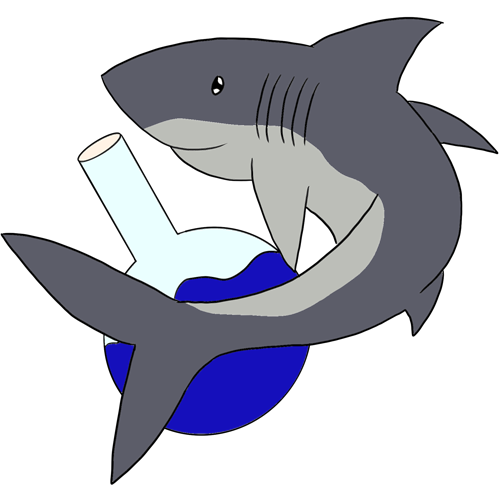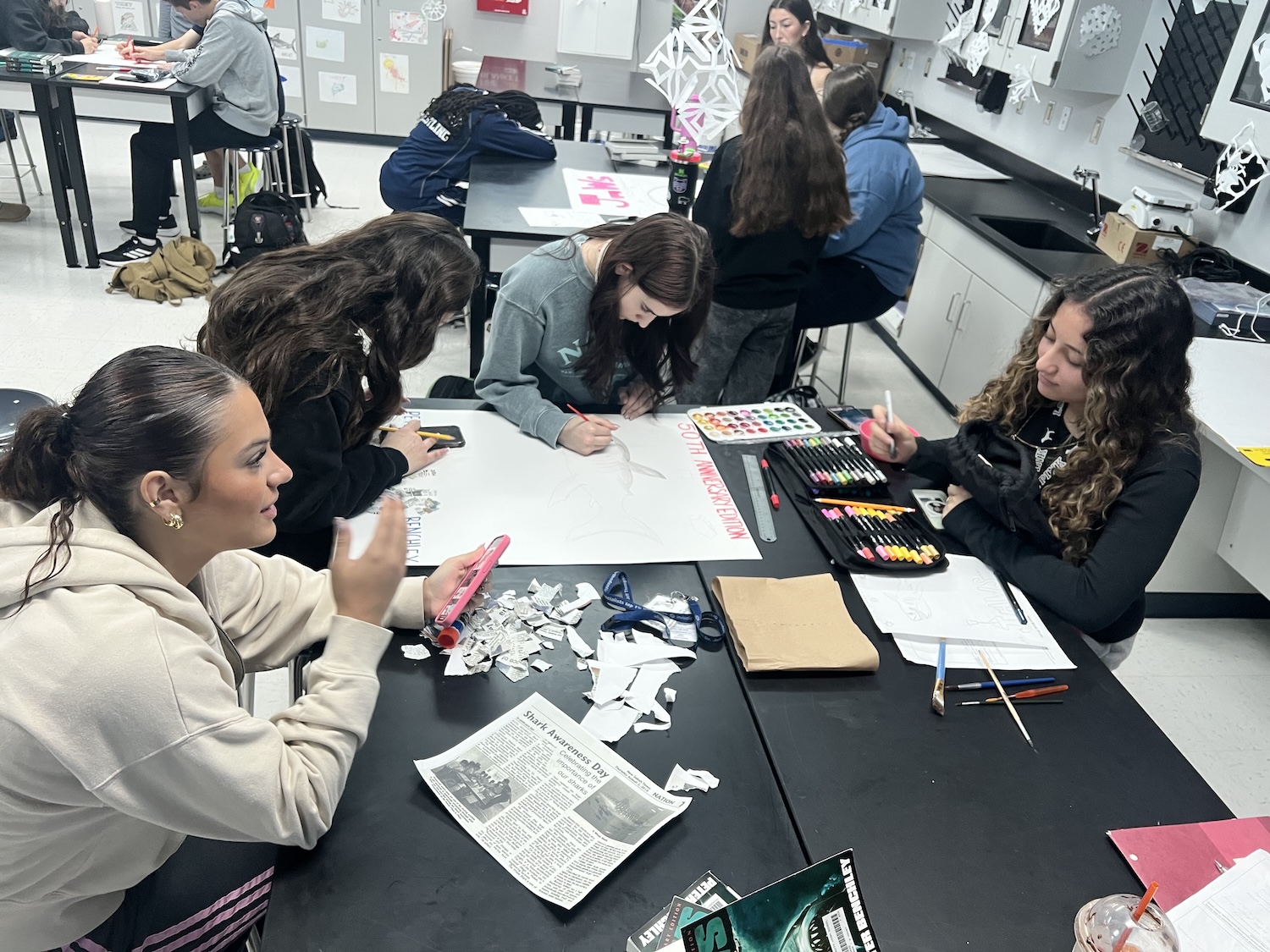This year’s Celebrate Literacy Week, Florida! encouraged educators to build literacy across subjects, and in our high school marine science classroom, we dove headfirst into one of the most iconic ocean-inspired novels of all time: Jaws by Peter Benchley. But instead of focusing on fear, we used this story as a launchpad for science, media literacy, and creative expression.
I am very lucky that my school media center takes all subjects into account for literacy week and was fully backing my idea of running with this activity. They provided me with a class set of books for my students to read as well as a Lego Jaws Set for them to build in the classroom.
Students weren’t just assigned to read Jaws—they explored it through a full class investigation and discussion including topics like:
- Character breakdowns to understand motivations and biases.
- Historical context of when the novel and movie were released.
- Shark science—a deep dive into the real biology and ecological importance of great white sharks.
- Ethics in storytelling, where students reflected on how fiction can influence public perception of animals.
- Visual and media literacy, including a look at how posters and film stills shape emotion and expectations.
Class Reflections: The Shark as the Victim
One major takeaway was Peter Benchley’s later regret. After seeing the devastating effects Jaws had on global shark populations, Benchley said:
“The shark in an updated Jaws could not be the villain; it would have to be written as the victim…”
This sparked a vibrant class discussion and critical thinking: Can fiction cause real-world harm? And if so, how do we make it right?
A Poster Project with a Message
Inspired by this, students engaged in a creative project to redesign the classic Jaws poster. These new designs portrayed the shark not as a menacing predator, but as a misunderstood creature, highlighting issues like overfishing, habitat loss, and the importance of shark conservation.
These posters became the centerpiece of a class gallery walk, where students presented:
- Their interpretation of the original poster’s message.
- Scientific facts about sharks’ roles in marine ecosystems.
- A revised narrative where sharks are not monsters, but marine keystones in need of protection.
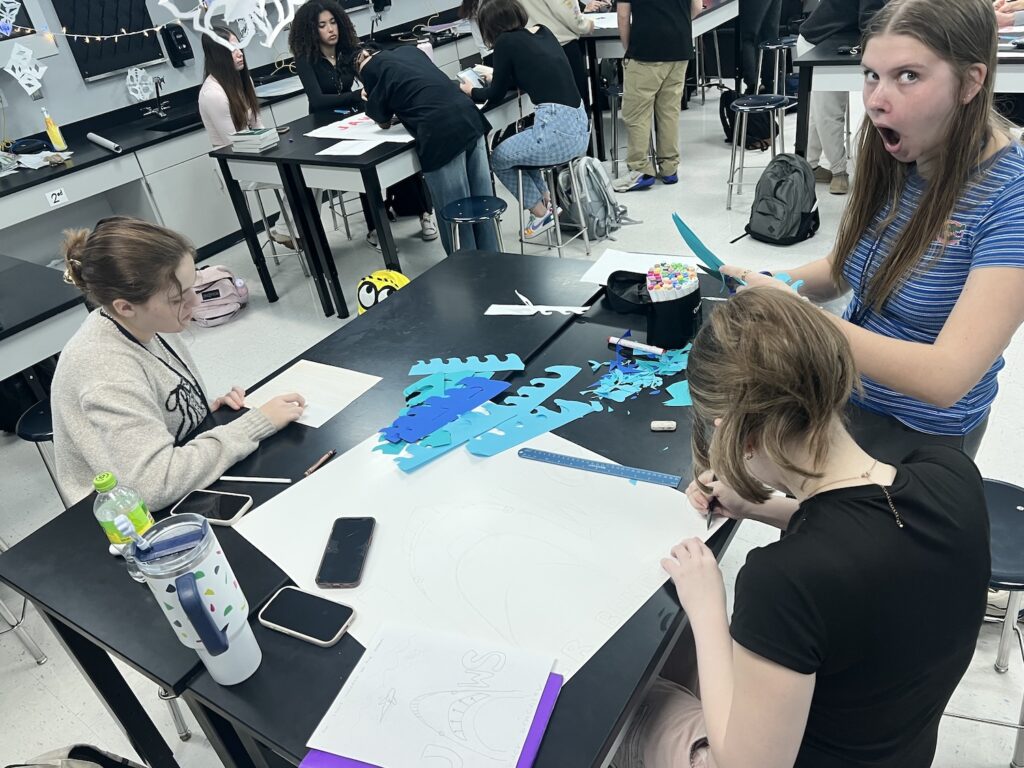
This allowed students to spin the fear that Jaws put into our culture and make it into something new and fitting of Peter Benchley’s often forgotten later career focusing on shark conservation.
Science + Literacy = Deeper Learning
This project was more than a book study. It was a chance to:
- Build science literacy through marine biology.
- Encourage empathy and environmental stewardship.
- Cultivate critical media awareness.
- Celebrate creativity and cross-curricular thinking.
This interdisciplinary approach allowed students to see the connections between storytelling and scientific understanding. By analyzing Jaws through both literary and ecological lenses, students developed a more nuanced perspective on how narratives can shape public perception and policy.
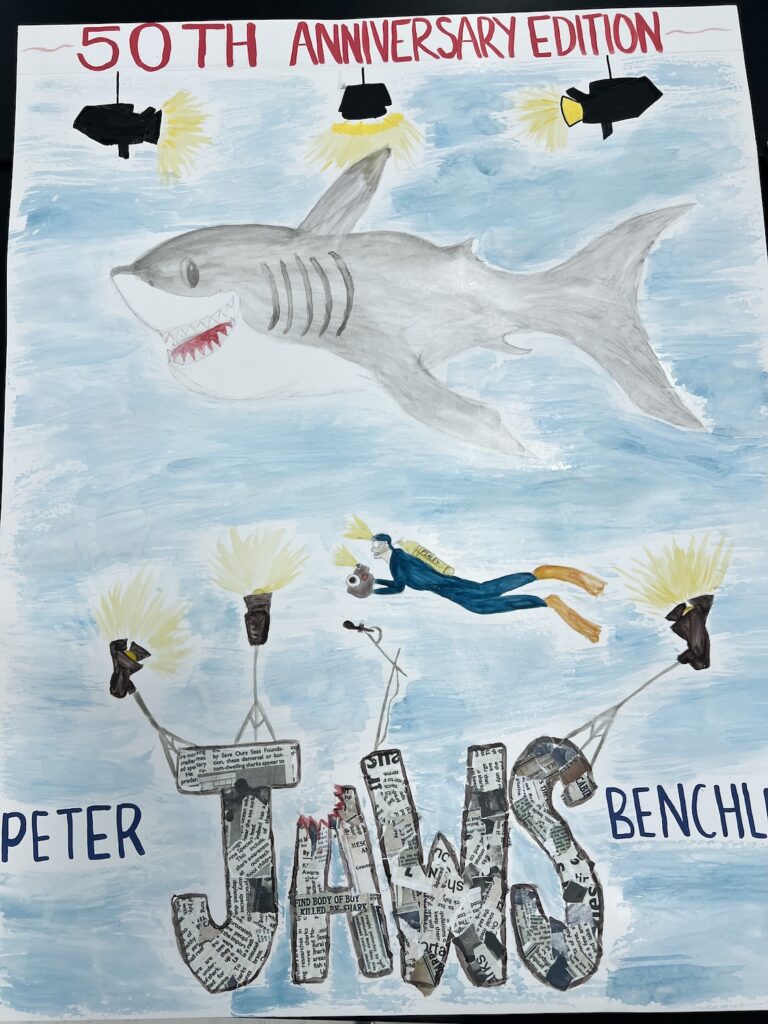

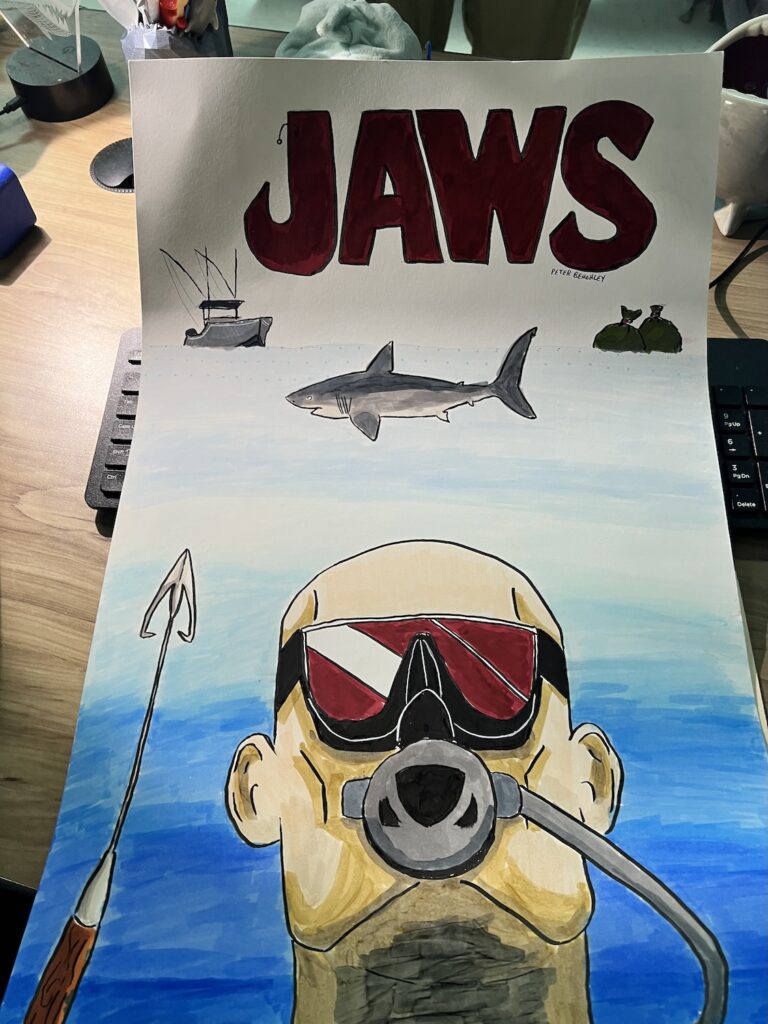
Our Jaws project exemplified the power of integrating literature into the science curriculum. It fostered critical thinking, creativity, and a deeper appreciation for the complexities of marine ecosystems. As we continue to build literacy across disciplines, such projects underscore the importance of holistic education in preparing students to navigate and understand the world around them.
Florida Literacy Week gave us the perfect excuse to blend literature and science in a way that was memorable, meaningful, and just the right amount of jawesome.
